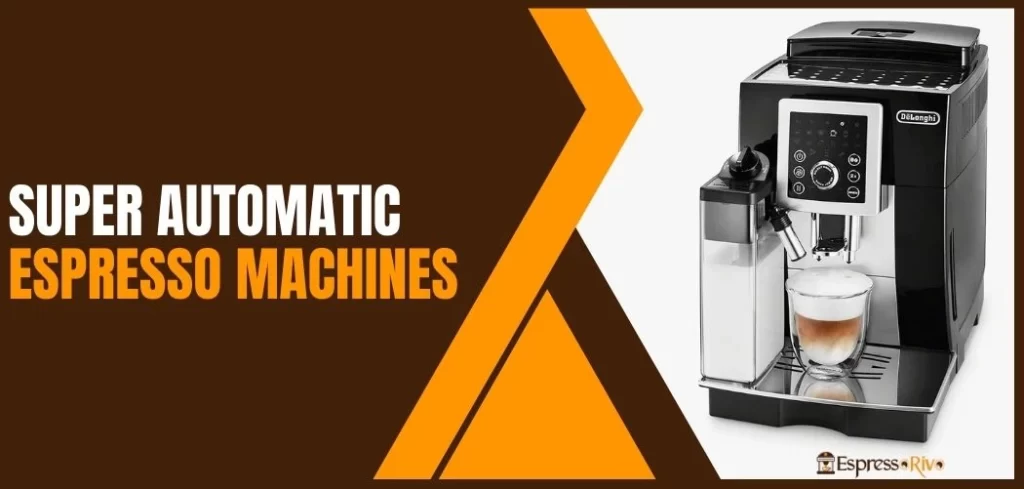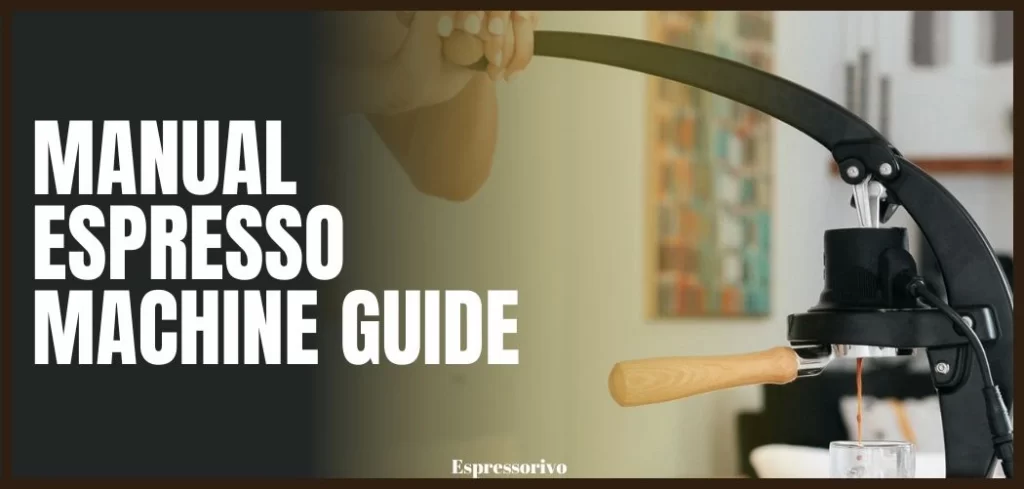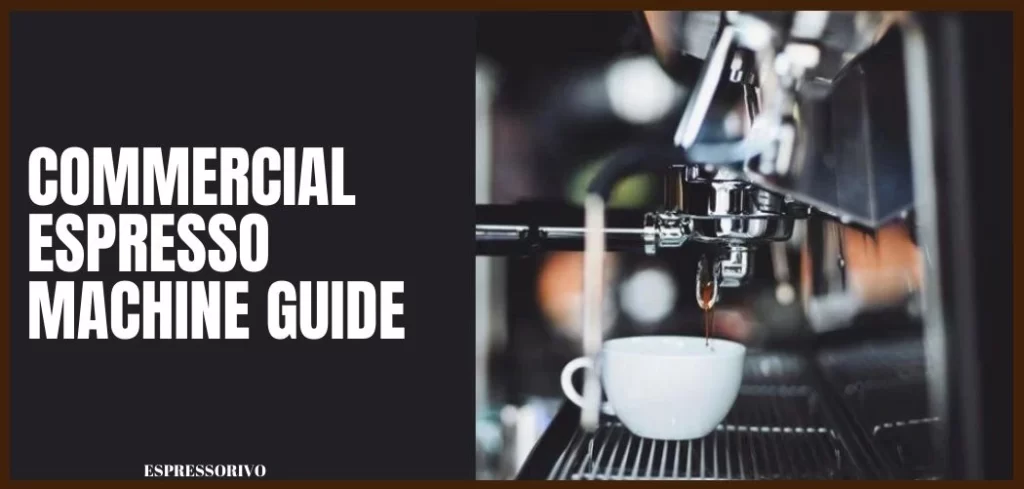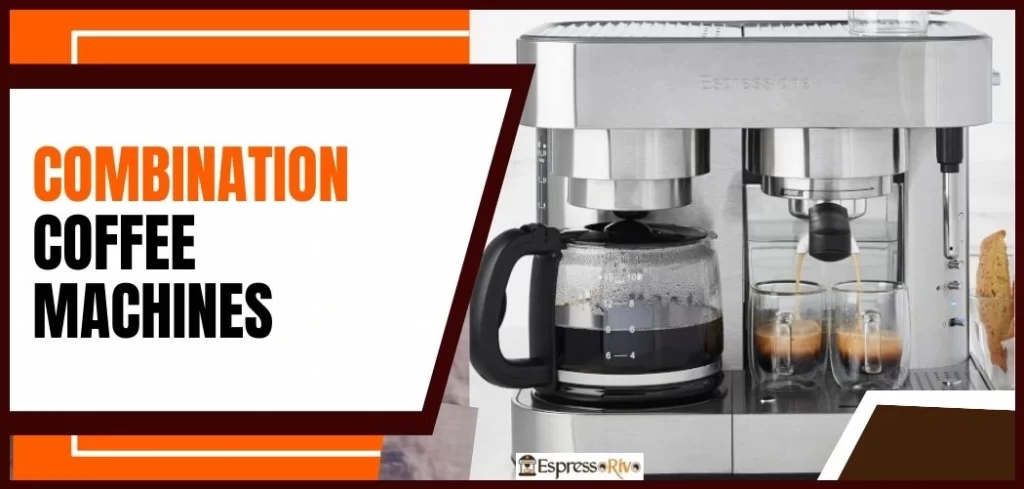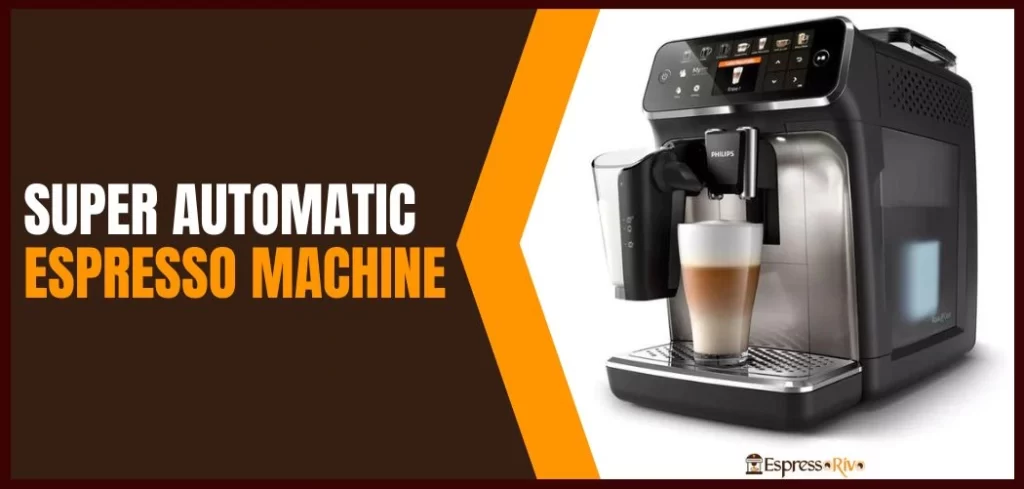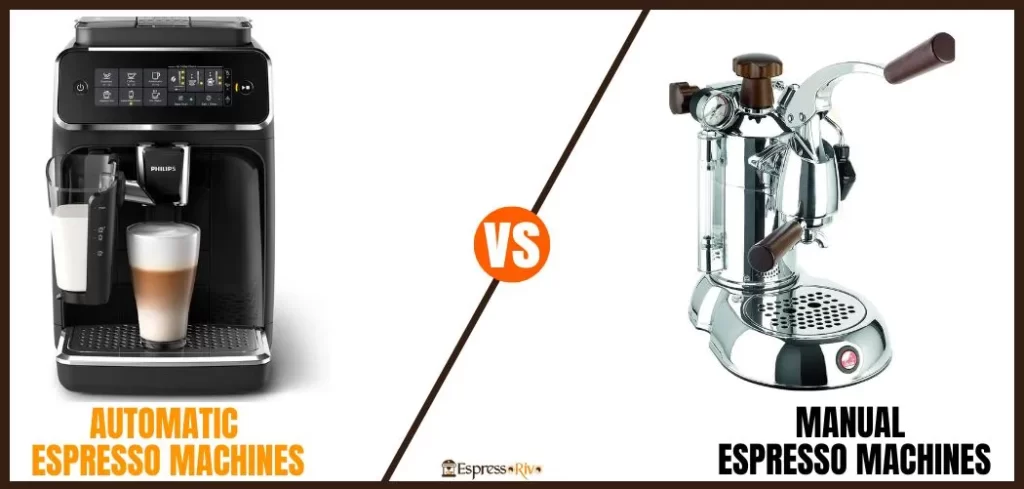If you’re a coffee enthusiast or a budding barista, chances are you’ve come across the mesmerizing world of espresso machines. The ability to craft a perfectly balanced shot of espresso or whip up a delicious latte at home has become an increasingly popular endeavor. However, with so many options available, it’s crucial to understand the differences between the various types of espresso machines to make an informed choice.
In this article, we’ll delve into the intriguing realm of combination espresso machines and traditional espresso machines. We’ll explore their unique features, advantages, and limitations, equipping you with the knowledge to select the perfect espresso machine for your brewing adventures.
Combination espresso machines, as the name suggests, are versatile marvels that integrate multiple brewing methods into a single appliance. Not only can they pull authentic espresso shots, but they can also whip up a drip coffee or even brew a rich cup of tea. These machines offer a convenient and space-saving solution for those seeking a multi-functional brewing experience.
On the other hand, traditional espresso machines, with their iconic aesthetics and manual operation, have a charm of their own. These machines demand a certain level of expertise and precision from the barista. They provide an unparalleled level of control over the brewing process, allowing enthusiasts to create artisanal espresso shots with finesse.
With this in mind, it’s essential to explore the unique features and intricacies of combination and traditional espresso machines. By understanding their differences, you can make an informed decision that aligns with your brewing aspirations.
So, join us as we embark on a journey to demystify the world of espresso machines. Whether you crave the convenience and versatility of a combination machine or aspire to master the artistry of traditional brewing, this article will equip you with the knowledge to choose the espresso machine that best suits your needs.
Understanding Combination Espresso Machines
Combination espresso machines are a coffee lover’s dream come true. These innovative machines seamlessly integrate multiple brewing methods into a single appliance, offering a world of possibilities for your morning cup of joe. Let’s take a closer look at what makes combination espresso machines so unique.
At their core, combination espresso machines are designed to pull authentic espresso shots. They feature a dedicated espresso brewing system, complete with a pump, boiler, and portafilter. This means you can indulge in the rich and concentrated flavors of espresso whenever you desire.
But here’s where the magic happens – combination machines go beyond espresso. They also incorporate other brewing methods, such as drip coffee or even tea. With a simple switch or adjustment, you can transform your machine into a versatile brewer, catering to different preferences and occasions.
One of the key advantages of combination machines is their convenience. By having multiple brewing methods in a single appliance, you can save valuable counter space and avoid cluttering your kitchen with multiple machines. Whether you’re craving a quick espresso shot or brewing a full pot of coffee for a gathering, a combination machine has got you covered.
Additionally, combination machines often offer user-friendly features and controls. Many models come equipped with programmable settings, allowing you to customize the strength and volume of your coffee. Some even have built-in timers, so you can wake up to the inviting aroma of freshly brewed coffee.
For those who enjoy experimenting with different flavors, combination machines offer versatility in brewing. You can explore a variety of coffee styles, from the robust intensity of espresso to the smoother notes of drip coffee. With the ability to switch between brewing methods, you can satisfy diverse taste preferences within your household or cater to guests with ease.
It’s important to note that while combination machines provide convenience and versatility, there may be some trade-offs. Due to the integration of multiple brewing methods, the quality of espresso shots may not match that of traditional espresso machines dedicated solely to espresso brewing. Additionally, the build quality and durability of combination machines may vary, so it’s crucial to research and choose a reputable brand.
Combination espresso machines are a fantastic option for those seeking convenience and versatility in their coffee brewing experience. With the ability to pull espresso shots, brew drip coffee, and sometimes even prepare tea, these machines offer a diverse range of options in a single appliance. While there may be some compromises in espresso quality and machine durability, the convenience and space-saving benefits make combination machines an attractive choice for many coffee enthusiasts.
Exploring Traditional Espresso Machines
Step into the realm of tradition and craftsmanship with traditional espresso machines. These captivating machines are revered for their iconic aesthetics, manual operation, and the unparalleled control they offer over the espresso brewing process. Let’s delve deeper into the world of traditional espresso machines and discover what sets them apart.
At the heart of a traditional espresso machine is a combination of classic design and mechanical precision. These machines often feature a robust and solid build, exuding a sense of timeless elegance. From gleaming stainless steel exteriors to intricate detailing, traditional espresso machines make a statement in any coffee lover’s kitchen.
What truly distinguishes traditional machines is the manual operation they require. Rather than relying on automated processes, the barista plays a vital role in the brewing process. From grinding the coffee beans to tamping the grounds and operating the machine, every step is a tactile and hands-on experience.
This level of manual control empowers the barista to achieve a high degree of precision in extracting espresso shots. With a traditional espresso machine, you have the ability to adjust variables such as grind size, water temperature, and extraction time, allowing you to tailor the flavor profile to perfection.
The distinct brewing process of traditional machines further adds to their allure. These machines typically utilize a lever or a group head mechanism to initiate the brewing process. This manual actuation gives the barista direct control over the water flow, resulting in a unique and nuanced extraction that captures the essence of the coffee beans.
One of the key advantages of traditional espresso machines is their ability to produce professional-level espresso shots. The combination of manual control, precision, and craftsmanship allows skilled baristas to create espresso that rivals the quality found in specialty coffee shops. If you’re passionate about honing your barista skills and delighting in the artistry of espresso making, a traditional machine is an excellent choice.
Moreover, traditional machines provide an immersive and sensory experience. The sound of the machine hissing and the aroma of freshly brewed espresso evoke a sense of authenticity and connection with the brewing process. For many coffee enthusiasts, the ritualistic nature of operating a traditional espresso machine adds an extra layer of enjoyment to the overall coffee experience.
However, it’s important to consider that traditional espresso machines do come with some limitations. They require a steeper learning curve compared to their automated counterparts, demanding time and practice to master the art of pulling consistent shots. Additionally, traditional machines often come with a higher price tag, reflecting the craftsmanship, durability, and manual operation they embody.
Traditional espresso machines offer a captivating blend of artistry, control, and sensory engagement. From their iconic aesthetics to the manual operation and precise extraction, these machines appeal to coffee enthusiasts seeking the utmost control over their espresso brewing. If you’re passionate about the craftsmanship and enjoy the hands-on experience of coffee making, a traditional espresso machine may be your perfect companion.
Feature Comparison: Combination vs. Traditional Espresso Machines
When it comes to choosing the perfect espresso machine, understanding the features and capabilities of different models is crucial. In this section, we’ll compare the key features of combination espresso machines and traditional espresso machines to help you make an informed decision.
Boiler System
The boiler system is a critical component of any espresso machine, as it determines the temperature and consistency of the water used for brewing. In combination machines, you’ll typically find different types of boiler systems. Single-boiler machines use a single boiler for both brewing espresso and steaming milk, which means you need to wait between these tasks. Double-boiler machines, on the other hand, have separate boilers for espresso brewing and milk steaming, allowing for simultaneous operations. Heat exchange machines utilize a single boiler with a heat exchanger, enabling you to brew espresso and steam milk simultaneously without waiting. In contrast, traditional machines often employ a single or dual boiler system, depending on the model. Dual boilers allow for precise control over both brewing and steaming temperatures.
Pump Mechanism
The pump mechanism is responsible for creating the necessary pressure to extract espresso. Combination espresso machines commonly use either vibratory pumps or rotary pumps. Vibratory pumps are generally found in entry-level or mid-range combination machines, offering reliable performance and cost-effectiveness. Rotary pumps, often found in higher-end models, provide more consistent pressure and quieter operation. Traditional espresso machines predominantly utilize rotary pumps, delivering stable pressure and enhanced control over the extraction process.
Grinders
Grinding fresh coffee beans is essential for achieving optimal flavor in your espresso shots. Combination espresso machines often come equipped with a built-in grinder, allowing for a streamlined and compact setup. These integrated grinders offer convenience and consistency, ensuring you have freshly ground coffee at your disposal. However, it’s worth noting that the grinder quality may vary depending on the specific model. Traditional espresso machines, on the other hand, typically require a standalone grinder. This gives you the flexibility to choose a grinder that suits your specific grinding needs and preferences, ensuring a higher level of control over grind size and quality.
Control and Customization Options
Customization and control play a significant role in crafting your ideal espresso. Combination machines offer a range of programmable settings, allowing you to adjust parameters such as shot volume, brew temperature, and pre-infusion time. Some models even feature digital displays and intuitive interfaces, making it easier to fine-tune your brewing preferences. Traditional machines, while offering manual control, may not provide as extensive programmability. However, they give experienced baristas the freedom to experiment with various variables manually, resulting in personalized and precise espresso shots.
As you weigh the features and capabilities of combination and traditional espresso machines, it’s important to consider your specific preferences and brewing goals. Combination machines excel in convenience, versatility, and space-saving design. They offer the ability to brew different coffee beverages with ease. Traditional machines, on the other hand, provide an unparalleled level of control, craftsmanship, and the opportunity to master the art of espresso making.
Advantages and Limitations
As we explore the world of espresso machines, it’s essential to weigh the advantages and limitations of both combination and traditional models. Understanding these factors will help you make an informed decision and select the espresso machine that best suits your brewing aspirations. Let’s dive into the advantages and limitations of each type.
Combination Espresso Machines
Advantages
- Convenience and Versatility: Combination machines offer the convenience of having multiple brewing methods in a single appliance. You can effortlessly switch between brewing espresso, drip coffee, and sometimes even tea, catering to different preferences and occasions.
- Space-Saving Design: With their multi-functionality, combination machines save valuable counter space, making them ideal for smaller kitchens or those seeking a streamlined setup.
- User-Friendly Features: Many combination models come equipped with programmable settings, allowing you to customize the strength and volume of your coffee. Some even have built-in timers, simplifying the brewing process and enhancing the overall user experience.
Limitations
- Compromised Espresso Quality: Due to the integration of multiple brewing methods, combination machines may not produce espresso shots that match the quality of traditional machines dedicated solely to espresso brewing.
- Varied Build Quality: The build quality and durability of combination machines can vary among different brands and models. It’s important to research and choose a reputable brand to ensure longevity and reliability.
Traditional Espresso Machines
Advantages
- Artistry and Control: Traditional machines offer the opportunity to become a skilled barista, as they require manual operation and provide a high level of control over the brewing process. You can adjust variables such as grind size, water temperature, and extraction time, allowing for a personalized and precise espresso experience.
- Professional-Level Espresso: The craftsmanship, manual control, and dedicated boiler systems of traditional machines enable the production of espresso shots that rival the quality found in specialty coffee shops.
- Sensory Engagement: The hands-on nature of operating a traditional machine, from grinding the beans to pulling the lever and enjoying the sights, sounds, and aromas, provides a sensory and immersive coffee experience.
Limitations
- Steeper Learning Curve: Traditional machines require time and practice to master. They demand a deeper understanding of the brewing process and the ability to consistently pull well-extracted shots.
- Higher Price Range: Traditional machines often come with a higher price tag compared to combination machines, reflecting the craftsmanship, durability, and manual operation they embody.
In the next section, we’ll provide some practical tips and considerations to guide you in selecting the right espresso machine for your needs. From budget considerations to assessing your brewing requirements, these insights will empower you to make a confident decision and embark on a flavorful journey into the world of home espresso brewing. So, let’s continue our exploration and uncover the secrets of finding your perfect espresso machine.
Choosing the Right Espresso Machine for You
Now that you’re armed with knowledge about combination and traditional espresso machines, it’s time to embark on the exciting journey of choosing the perfect espresso machine for your home. Consider the following factors to guide you in making a confident decision.
Assess Your Brewing Needs
Start by understanding your brewing preferences and needs. Do you primarily enjoy espresso shots, or do you also like to indulge in drip coffee or other beverages? If you desire versatility and convenience, a combination espresso machine might be the ideal choice. However, if you’re passionate about mastering the art of espresso making and value the hands-on experience, a traditional machine could be your perfect match.
Budget Considerations
Determine your budget range for an espresso machine. Combination machines often offer a more affordable option, while traditional machines, with their craftsmanship and precision, tend to have a higher price tag. Consider your long-term investment and the value you place on manual control and espresso quality when deciding on your budget.
Available Space
Evaluate the space available in your kitchen or brewing area. Combination machines are designed to save space, making them suitable for smaller kitchens or those seeking a streamlined setup. Traditional machines, with their elegant design and larger footprint, may require more counter space. Measure your available space and ensure it can accommodate the machine you choose.
Brewing Control and Customization
Consider the level of control and customization options you desire. Combination machines often come with programmable settings, allowing you to adjust shot volume, brew strength, and other parameters. Traditional machines offer manual control, enabling you to fine-tune every aspect of the brewing process. Determine your preference for hands-on control or programmability based on your brewing style and expertise.
Longevity and Durability
When investing in an espresso machine, consider its longevity and durability. Read reviews, seek recommendations, and choose a reputable brand known for manufacturing reliable machines. Traditional machines, with their solid build and craftsmanship, are often built to last. Combination machines may have varying build qualities, so research the specific model and brand to ensure it meets your expectations.
Barista Skills and Learning Curve
Reflect on your barista skills and the amount of time you’re willing to invest in learning. Traditional machines require a steeper learning curve, as they demand manual operation and an understanding of variables such as grind size, extraction time, and milk steaming techniques. Combination machines offer a more user-friendly experience, making them suitable for beginners or those seeking convenience.
Future Growth
Consider your future aspirations in the world of coffee. If you’re passionate about diving deep into the art of espresso making and expanding your skills, a traditional machine can provide room for growth and experimentation. However, if you prioritize convenience and flexibility, a combination machine might be more suitable, as it allows you to explore different brewing methods without the need for additional equipment.
By considering these factors, you can narrow down your options and find the espresso machine that perfectly aligns with your needs, budget, and brewing goals. Remember, whether you choose a combination or traditional machine, the joy of crafting your own delicious espresso awaits.
Additional Tips and Resources
Congratulations on your decision to embark on the wonderful journey of home espresso brewing! To help you further enhance your skills and make the most out of your espresso machine, here are some additional tips and resources:
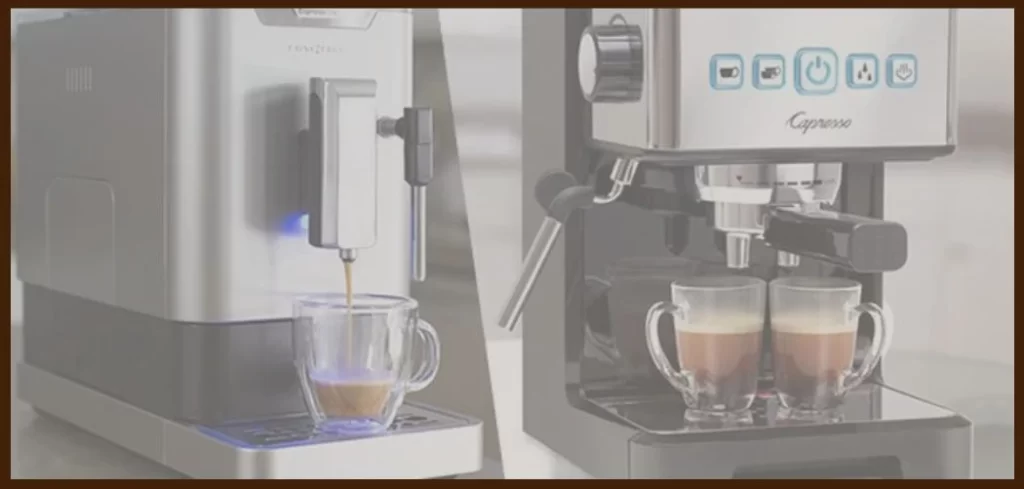
Quality Coffee Beans
The foundation of a great espresso is high-quality coffee beans. Invest in freshly roasted beans from reputable sources. Look for beans that are specifically labeled for espresso, as they are often roasted to bring out the rich flavors and aromas desired in espresso shots.
Proper Grinding
Invest in a high-quality burr grinder if you opt for a traditional espresso machine. Consistent and precise grinding is crucial for achieving optimal extraction. Experiment with different grind settings to find the sweet spot that matches your desired taste and brewing time.
Water Quality
Use filtered or bottled water to ensure the best-tasting espresso. Tap water with high mineral content or impurities can negatively affect the flavor and longevity of your machine. Additionally, descale your machine regularly to prevent mineral buildup.
Dialing in the Shot
Take the time to dial in your espresso shot by adjusting variables such as grind size, tamping pressure, and extraction time. Keep a logbook to track your experiments and findings, helping you achieve consistency in your brewing.
Milk Frothing Techniques
If you enjoy milk-based espresso beverages like lattes and cappuccinos, learn the art of milk frothing. Practice different techniques to achieve silky-smooth microfoam, which adds a creamy texture and enhances the flavor of your drinks.
Online Communities and Forums
Join online coffee communities and forums to connect with fellow enthusiasts and share knowledge and experiences. Engaging with a community of coffee lovers can provide valuable insights, troubleshooting tips, and recommendations for equipment and beans.
Barista Courses and Workshops
Consider taking a barista course or attending workshops to further refine your skills. Many coffee shops and specialty coffee schools offer classes covering topics such as espresso extraction, latte art, and advanced brewing techniques. These courses can provide hands-on experience and expert guidance.
Coffee Blogs and Books
Explore coffee blogs and books that delve into the art and science of espresso brewing. There is a wealth of information available, including guides on coffee bean origins, brewing methods, and barista techniques. Some popular coffee books to consider are “The Professional Barista’s Handbook” by Scott Rao and “Espresso Coffee: The Science of Quality” by Andrea Illy and Rinantonio Viani.
Remember, becoming an exceptional home barista is a continuous learning process. Embrace experimentation, stay curious, and enjoy the journey of exploring the vast world of coffee flavors and techniques.
Conclusion
The world of espresso machines offers a range of options to suit every coffee lover’s preferences and brewing goals. Whether you opt for a combination espresso machine or a traditional model, both have their advantages and limitations.
Combination espresso machines provide convenience and versatility, allowing you to brew espresso, drip coffee, and sometimes even tea with a single appliance. They are space-saving and often come with user-friendly features that enhance the brewing experience. However, it’s important to note that the espresso quality may not match that of dedicated traditional machines, and build quality can vary among different brands.
On the other hand, traditional espresso machines provide an opportunity to become a skilled barista, offering manual control and the ability to fine-tune every aspect of the brewing process. They deliver professional-level espresso shots and provide a sensory engagement that is hard to replicate. However, they come with a steeper learning curve and a higher price range.
When choosing the right espresso machine for you, it’s essential to assess your brewing needs, consider your budget, evaluate the available space, and think about the level of control and customization you desire. Additionally, factors such as longevity, barista skills, and future growth should be taken into account.
Ronsil
Meet Ronsil, the master barista behind EspressoRivo. With years of experience in the coffee industry, he brings a wealth of knowledge and passion to the table. As the owner of a successful coffee shop, Ronsil is a sought-after adviser in the field. His expertise and love for the craft shines through in every cup he serves. We are honored to have him as part of our team at EspressoRivo
